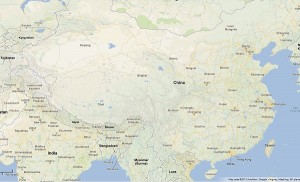
China’s National Meteorological Center issued a “yellow” smog alert for much of the country’s north on Monday, the fifth consecutive day of heavy pollution which has slashed visibility and seen pollution reach hazardous levels.
The smog has prompted a rush by consumers to buy face masks and air purifiers, state-run China National Radio reported, with sales of the machines tripling in recent days at one Beijing electronics store, it said citing a store employee.
Beijing issued an “orange” pollution alert on Friday – the second-highest on the scale – leading to orders for manufacturing plants in the city to cut production, while building work has been halted and barbeques curbed.
Physical education classes and outdoor exercises at schools have also been called off, the state-run Xinhua news agency reported.
Levels of small airborne particles which easily penetrate the lungs and are known as PM 2.5 have repeatedly reached more than 400 micrograms per cubic metre in recent days, according to a count by the US embassy in Beijing, more than 16 times the World Health Organization’s (WHO) safety guideline of 25 micrograms.
Cities across China have been hit by intense air pollution in recent years, much of it caused by emissions from coal-burning power stations.
China’s pollution problems are blamed on rapid urbanisation, dramatic economic development, increasing car use and climatic factors. Pollution tends to worsen in winter.
Airborne particles have been linked to hundreds of thousands of premature deaths, and the problem has emerged as a major source of discontent with China’s government.
The National Meteorological Center has said the pollution is expected to continue until Thursday.